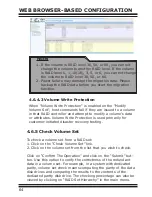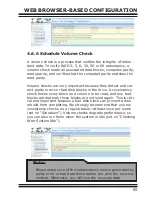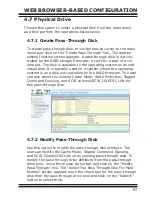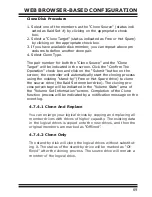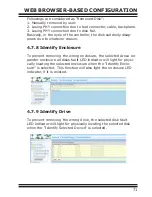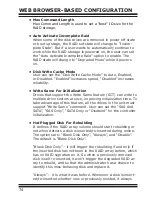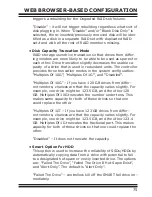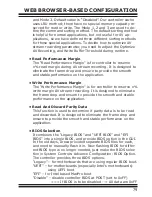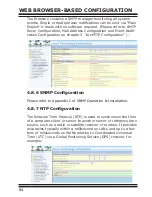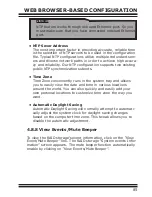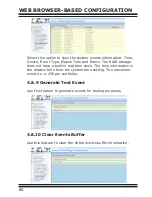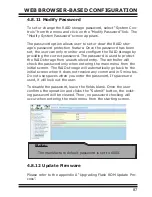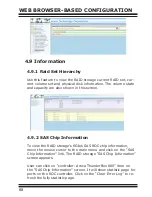
75
WEB BROWSER-BASED CONFIGURATION
triggers a rebuilding for the Degraded RAID set/Volume.
“Disable” – it will not trigger rebuilding regardless what sort of
disk plugging in. When “Disable” and/or “Blank Disk Only” is
selected, the re-inserted/previously removed disk will be iden-
tified as a disk in a separate RAID set with duplicated RAID-
set# and with all the rest of RAID members missing.
• Disk Capacity Truncation Mode
RAID storage uses drive truncation so that drives from differ-
ing vendors are more likely to be able to be used as spares for
each other. Drive truncation slightly decreases the usable ca-
pacity of a drive that is used in redundant units. The controller
provides three truncation modes in the system configuration:
“Multiples Of 10G”, “Multiples Of 1G”, and “Disabled”.
“Multiples Of 10G” – If you have 120 GB drives from differ-
ent vendors; chances are that the capacity varies slightly. For
example, one drive might be 123.5 GB, and the other 120
GB. Multiples Of 10G truncates the number under tens. This
makes same capacity for both of these drives so that one
could replace the other.
“Multiples Of 1G” – If you have 123 GB drives from differ-
ent vendors; chances are that the capacity varies slightly. For
example, one drive might be 123.5 GB, and the other 123.4
GB. Multiples Of 1G truncates the fractional part. This makes
capacity for both of these drives so that one could replace the
other.
“Disabled” – It does not truncate the capacity.
• Smart Option For HDD
This option is used to increase the reliability of SSDs/HDDs by
automatically copying data from a drive with potential to fail
to a designated hot spare or newly inserted drive. The options
are: “Failed The Drive”, “Failed The Drive If Hot Sapre Exist”,
and “Alert Only”. The default is “Alert Only”.
“Failed The Drive” – controllers kill off the SMART fail drive im-
mediately.




